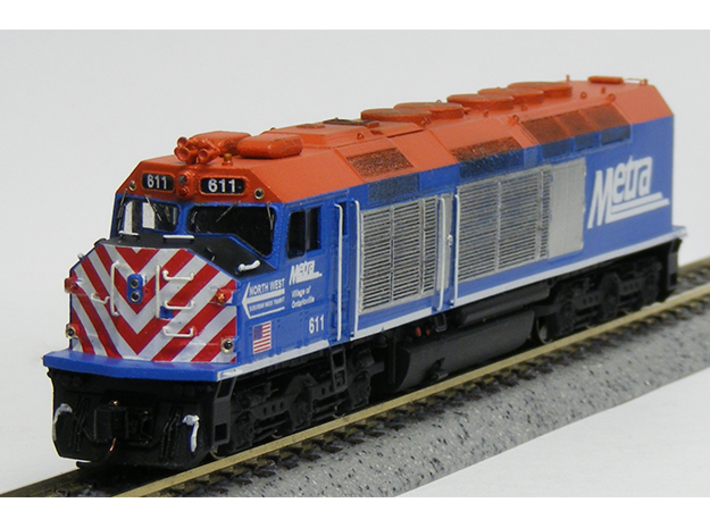
Damin Keenan lives near Chicago, and “that is why so many of my designs are Chicago-based,” he says. Damin has designed trains from the CTA, Metra, and its predecessor along the Milwaukee Road. Here, he talks about the project where he cut his teeth and how 3D printing opened up small scales for him.
How long have you been working with model trains?
I’ve been fascinated with trains (both full size and miniature) for my entire life. I’ve been involved in model railroading as long as I can remember. I started building (and modifying) models as soon as I was old enough to handle a hobby knife.
How did you learn to make 3D models?
I studied 3D graphics in college. My major was electronic visualization, which emphasized virtual reality and real-time 3D programming. The technologies that I learned included Maya, VRML, and OpenGL.
How did you buy or make trains before you discovered Shapeways?
Model trains have been produced commercially for decades. And anything that isn’t commercially available could always be kit-bashed or scratch-built. However, those approaches are limited by one’s skills.
What I really like about 3D printing is that I can produce a design on the computer that is much finer and more accurate that I can reproduce with my hands. Especially in smaller scales like N scale, where my fat fingers always seem to get in the way of themselves.
What has 3D printing added to your appreciation of model trains?
Freedom. 3D printing allows me to create models of unique and unusual types of equipment. My first 3D printing project was an N scale version of the EMD F40PHM-2, a locomotive built for commuter service in the Chicago area. Only 30 of them were ever built; and only one transit agency operates them.
This type of ultra-niche equipment will never be done by the traditional model manufacturers. But thanks to 3D printing, not only can I have one of them, I can have an entire fleet of them; and at a level of detail and cost that is comparable to a high end commercial model.
How long does it take you to design one of the 3D printed models? How long to paint one?
A typical project will take about 40 or so hours of work to get to the point where I consider the design to be finished. I work on my 3D projects in my spare time. So the design work on a new 3D model can span several months.
N Scale EMD F40C (Milwaukee Road) by Damin Keenan. Built, painted, and photographed by Jeff King of MilwaukeeRoadTrainShop.com
The time required to assemble and paint the finished models depends on the design. Some models have simpler paint schemes than others. I use an airbrush to paint most of my models. I like to paint my models in batches, where I can apply one color to a group of models and then move on to the next color and group while the first group dries.
What’s your best design?
I like to think that I set high standards for myself and will not open a design to the public until I am satisfied that it is the best that it can be. So, as a result, I really don’t have a single model that I single out as the best.
If I had to choose, I’d probably pick my first project, the N scale EMD F40PHM-2, as that was the one that I “cut my teeth” on. It really cemented all of the possibilities that 3D printing has for me.
If I had to choose a second, it would be the N scale Baldwin-Westinghouse Steeplecab because it shows how a design can be a part of communal process. It all started out as a conversation on a model railroading forum about electric railroads. And one point the topic drifted over to “why doesn’t somebody do a steeplecab in 3D?” Which at that point I figured, why not me?
So I started working on the design and would post my progress online for the others to give me their feedback. The model turned out really nice and was very popular when I made it available for ordering. I’m still working on finishing painted examples. I’ll post them on the product page as soon as they’re ready.


Can an HO scale model 1:87 scale or thereabouts of the World Trade Center Towers (pre 2001)be made in sections on a 3D printer? If so where could I seek out information on how to either make or purchase a pair? I would be limited in height to about a total of 36 inches or so. Therefore the towers might need to be shortened. Completely hollow inside just what would be necessary to support the walls.